ThinkWeights are carefully machined sculptures of important numbers like PI, formulas, or diagrams
intended to be displayed on your desk. The origin of the idea came from an experiment with Newton's
Anagram of Calculus, which we engraved into metal and left on a desk in two major high-tech
R&D labs. Work in the departments came to a stop while the engineers speculated on what it
meant. ThinkWeights are supposed to start conversations, as well as being a handy reference for
very precise calculations.
ThinkWeights are made by rotary engraving letters and numbers deeply into
aircraft-grade aluminum. These will last for centuries, providing a handy backup reference for
future generations.
If new measurements of the expansion of the universe require a 40th digit, we'll be happy to oblige.
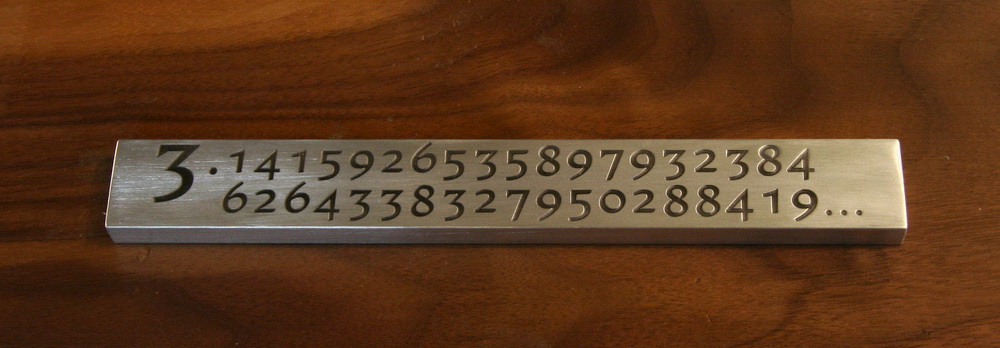
|
PI has stimulated an amazing amount of research over the years. In computer
science it's considered sport to compute as many digits of PI as possible. This
paperweight showing PI would be a great gift for the math enthusiast, engineer, or
anyone with a fascination for geometry. PI stands out as the most famous of the
irrational numbers but is a very rational gift for yourself or a friend.
|
$79
Available
|
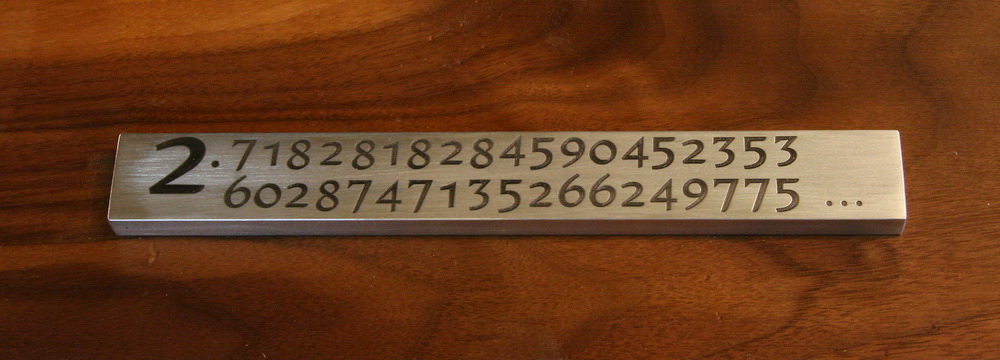
|
e is the base of the natural logarithm. An irrational number like
PI, e is calculated as the sum of a series expansion. While we don't have
as clever a use for 39 digits of e, its importance in mathematics is
immense. John Napier has been credited with original work on logarithms, and
is perhaps more well known for that work than for
Napier's Bones, reproduced here as well.
|
$79
Available
|

|
phi is often called the "Golden Ratio" or "Golden Mean",
and is calculated by dividing a line into two parts so that the full
length divided by the longer part is equal to the longer part divided
by the smaller part. Perhaps the most common geometrical shape illustrating
the golden ratio is a credit card. We're quite confident that this would
be a great gift for artists, architects, and anyone else with a keen sense of design.
|
$79
Available
|
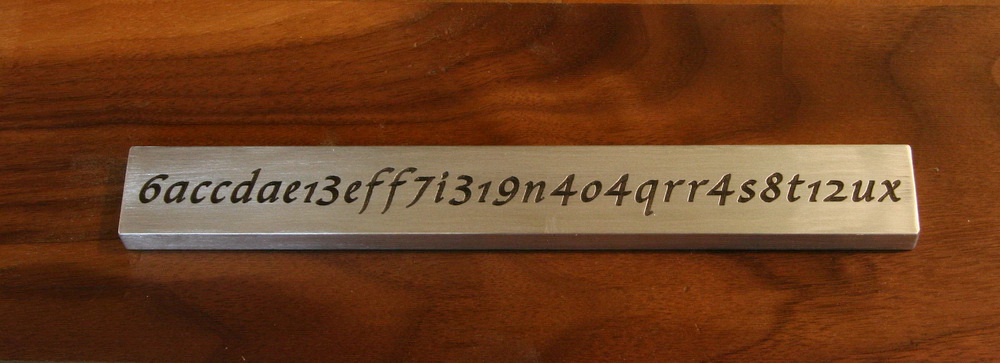
|
Sir Issac Newton, famous for many innovations, used an anagram to
encode his method of fluxions. In Newton's time it was fashionable
to encode intellectual innovation as anagrams to conceal their meaning yet
be able to claim first publication of an idea. This anagram was used
in a letter to his rival Leibniz in 1677, giving the letter counts for
Data aequatione quotcunque fluentes quantitates involvente, fluxiones
invenire: et vice versa.
|
$79
Available
|
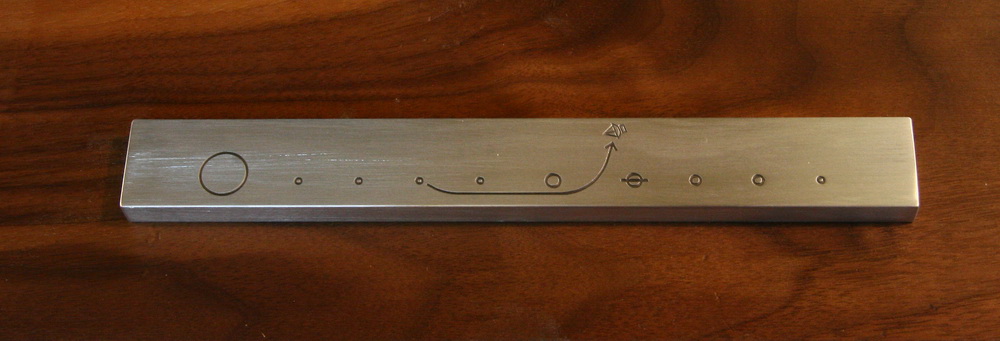
|
Pioneer 10, was launched in 1972 and has become the first spaecraft to
leave our solar system. Fastened to an antenna support strut is a plaque
intended to help another civilization decipher Pioneer's origin.
This ThinkWeight evokes the artwork at the bottom of the plaque - the
idea being to start a conversation about the Pioneer mission.
|
$79
Available
|
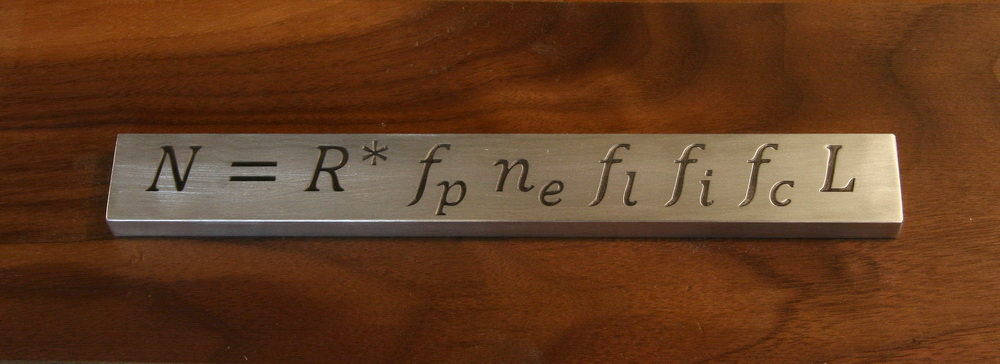
|
Drake's Equation is more of a guide to estimating the number of civilizations
that we might communicate with (or discover Pioneer 10) than an exact formula. The
terms are star formulation rate, fraction of stars with planets, fraction of planets
that could support life, fraction of planets that actually develop life, fraction of
planets the develop intelligent life, fraction of civilizations that transmit their
existence, and the length of time those transmissions persist.
|
$79
Available
|
There are great resources on the Internet that discuss PI and the utility of 39 digits.
The video Pi and the size of the Universe by Numberphile has
an entertaining discussion of 39 digits of PI.
Calculation details can be seen at:
Long Numbers (Pi and the Universe)
from Ken Ward's Java Script Tutorial.